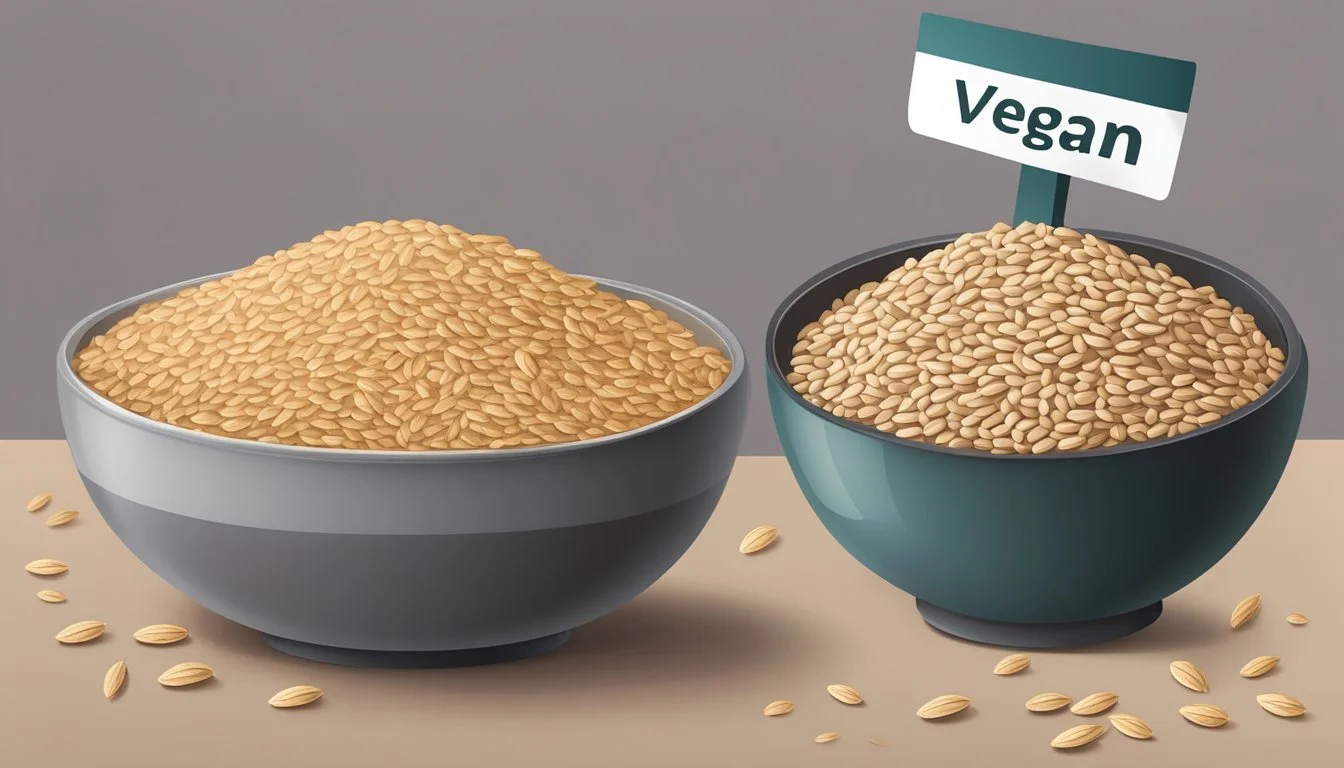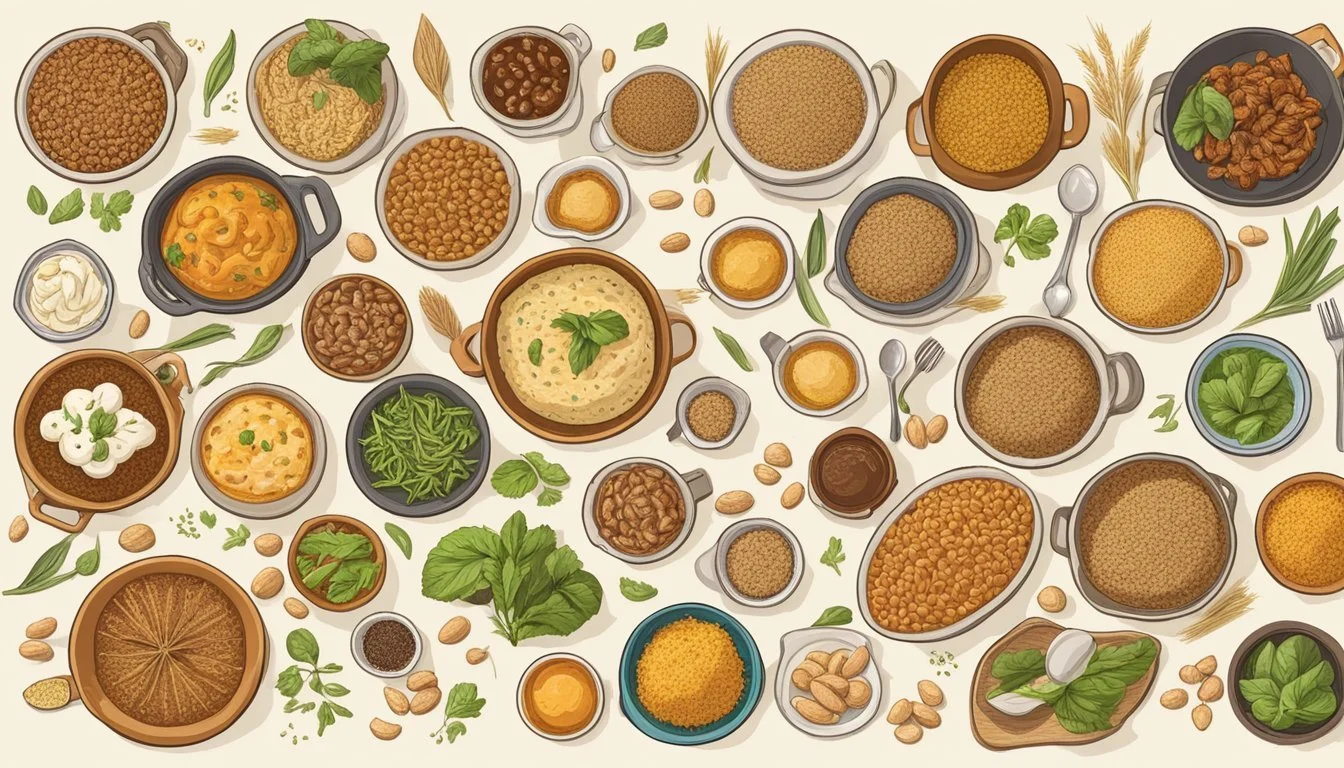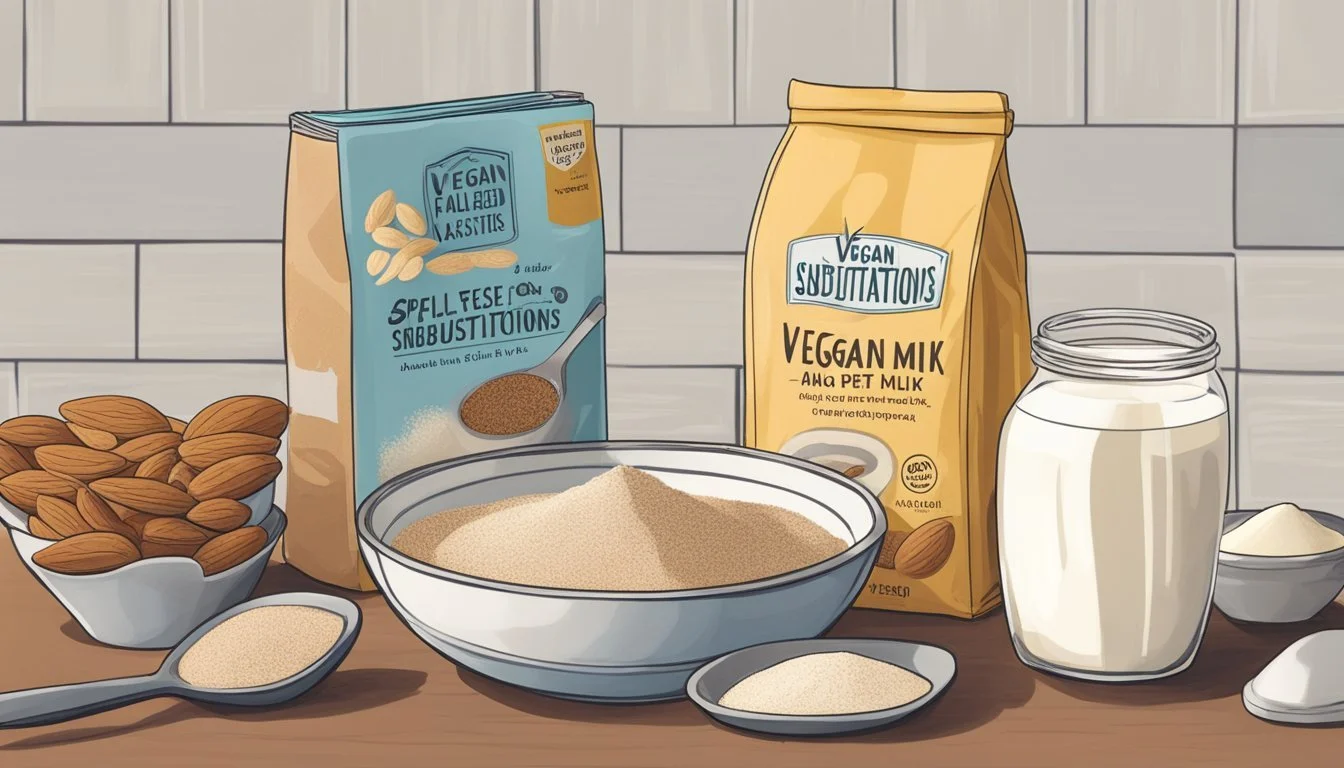Is Spelt Vegan?
Unveiling the Truth About This Ancient Grain
Spelt is an ancient grain known for its nutty flavor and healthful properties, often utilized as a wheat substitute. Unlike modern wheat, spelt has been cultivated for thousands of years and has not undergone the same degree of hybridization. One of the questions that often arise in dietary circles is whether spelt is a suitable ingredient for those following a vegan lifestyle. Veganism excludes all animal products, emphasizing plant-based foods.
Fortunately, for those who adhere to a plant-based diet, spelt is indeed vegan. As a grain, spelt fits perfectly into a vegan diet, which encompasses fruits, vegetables, legumes, seeds, and grains like spelt. Due to its rich nutritional profile, including fiber and protein, spelt offers an excellent food option for vegans who are attentive to their overall macro- and micronutrient intake.
Amidst the rise in popularity of plant-based and health-conscious eating, spelt has experienced a resurgence, finding its way into a myriad of vegan recipes. Spelt flour has proven itself versatile in the kitchen, forming the basis of numerous vegan-friendly dishes—from hearty breads and rolls to fluffy pancakes and scrumptious cookies. This ancient grain's adaptability, combined with its compatibility with a vegan lifestyle, ensures its place as a staple in many health-focused kitchens.
What Is Spelt?
Spelt is an ancient grain known scientifically as Triticum spelta. It is closely related to more common types of wheat and shares a similar nutritional profile.
Characteristics of Spelt:
Ancient Grain: Spelt is categorized as an ancient grain. This term is used to describe grains that have remained largely unchanged over the last several centuries.
Whole Grain: Spelt can be found in its whole grain form, often referred to as spelt berries. They offer a robust whole grain option for various culinary uses.
Versatile Use: Flour made from spelt provides a nutty flavor and can be used in a range of recipes.
Gluten Content: While spelt flour is an alternative to common wheat, it still contains gluten. Therefore, it is not suitable for individuals with celiac disease or gluten sensitivity.
Nutritional Components:
High Fiber: Spelt is higher in fiber when compared to common wheat, making it a hearty choice for those seeking to increase their fiber intake.
Minerals: It is also a good source of essential minerals such as phosphorous, magnesium, iron, and zinc.
In conclusion, spelt is a versatile and nutritious whole grain that fits into a vegan diet. Its dense, chewy texture and rich, nutty flavor make it a favored ingredient for those looking to diversify their grain consumption. However, its gluten content means it must be avoided by those with specific dietary restrictions related to gluten.
Nutritional Profile of Spelt
Spelt is a nutritious ancient grain garnering attention for its health benefits and suitability in a vegan diet. It provides a wholesome array of macronutrients and a rich composition of vitamins and minerals.
Macronutrients in Spelt
Calories: A cup of cooked spelt contains approximately 246 calories.
Protein: Rich in protein, spelt offers about 10.67 grams per cup, supporting muscle repair and growth.
Fiber: Spelt is high in dietary fiber, with approximately 7.6 grams per cup, which aids in digestion and promotes satiety.
Fats: It is low in fat, containing just 1.65 grams per cup, with a balance of mono- and polyunsaturated fats.
Vitamins and Minerals in Spelt
Iron: Essential for blood health, a cup of cooked spelt provides 3.24 mg of iron.
Potassium: Spelt contains 277 mg of potassium per cup, which is vital for heart and muscle function.
Magnesium, Zinc, and Phosphorus: A cup of spelt is also a good source of magnesium at 95 mg, zinc at 2.02 mg, and phosphorus at 291 mg, contributing to bone health and metabolism.
Spelt in Vegan Baking
Spelt flour offers a nutty flavor and adaptable baking properties, making it a prized ingredient for vegan baked goods, from breads to cookies. With higher protein content, it can provide structure in recipes that omit eggs.
Spelt Bread Recipes
Spelt flour's ability to create a robust structure in vegan bread is notable. For vegan spelt bread, combining whole spelt flour with baking soda and apple cider vinegar can create a simple vegan soda bread without yeast. This method relies on the quick reaction between the acid and base to produce a rise, yielding a freshly baked bread with a rustic character.
Quick Vegan Spelt Soda Bread:
Mix whole spelt flour with baking soda and sea salt.
Create vegan buttermilk by adding apple cider vinegar to plant-based milk and incorporate it into the dry ingredients to form a dough.
Bake until golden and enjoy a slice of this hearty toast alternative.
Spelt Pancakes and Muffins
In vegan pancakes and muffins, spelt flour contributes to a fluffy texture while maintaining a wholesome profile. Vegan spelt pancakes made from a simple batter of spelt flour, baking powder, plant milk, and a sweetener like maple syrup result in a satisfying breakfast option.
Vegan Banana Spelt Muffins:
Combine spelt flour with baking powder, mashed banana, and maple syrup.
Mix wet ingredients into the dry until just combined and bake to create nutrient-dense muffins.
Other Vegan Spelt Goods
Spelt flour's versatility extends to a variety of other vegan baked goods, such as cookies and cakes. Using simple ingredients, spelt flour can transform treats into more wholesome versions of classic favorites.
For vegan spelt cookies:
Use spelt flour and simple ingredients like olive oil and maple syrup to create a dough.
Bake until edges are crisp for a deliciously healthier cookie experience.
Substituting spelt flour in vegan cakes offers a denser, moist crumb and a satisfying texture, perfect for those seeking wholesome yet indulgent desserts.
Understanding Gluten in Spelt
When considering spelt within a diet, it is essential to address its gluten content and how it compares to other grains. While spelt offers similar nutritional benefits to wheat, its gluten profile is of particular interest for individuals with gluten-related sensitivities.
Spelt Vs. Wheat Gluten
Spelt is an ancient grain that is related to whole wheat, yet it maintains a unique profile. Gluten, a protein complex, is present in both spelt and wheat, making them unsuitable for a gluten-free diet. Spelt flour is valued for its nutty flavor and can be used in various culinary applications including bread recipes. Although spelt is often touted as an alternative to modern wheat, it is not a gluten-free option like quinoa.
Nutritional Content: Spelt and wheat share many nutritional similarities; both contain essential vitamins and minerals.
Gluten Structure: Spelt's gluten is often considered more water-soluble, which can result in lighter, airier textures in baked goods.
Gluten Intolerance and Spelt
For individuals with gluten intolerance or celiac disease, the presence of gluten in spelt makes it an inappropriate choice. While some individuals believe that the slightly different structure of spelt gluten might be easier to digest, no scientific evidence supports this claim for those with gluten-related disorders.
For those with celiac disease, even small quantities of spelt can trigger an immune response.
Individuals with a non-celiac gluten sensitivity may also experience adverse reactions to spelt.
Cooking and Baking Tips
When using spelt in vegan cooking and baking, one must consider proper preparation of spelt flour, specific baking techniques, and storage solutions to ensure optimal freshness and taste.
How to Prepare Spelt Flour
To prepare spelt flour for cooking or baking, one should always sift the flour first to remove any lumps and aerate it. This is especially important in delicate recipes where consistency matters. For example, when making vegan pancakes, one would sift together spelt flour with baking powder, cane sugar, a pinch of sea salt, and any other required dry ingredients into a mixing bowl.
Baking Techniques with Spelt
Spelt requires different considerations compared to regular wheat flour. In recipes using baking powder, it is critical to follow precise measurements to ensure a light and airy texture, as spelt can be denser. For yeast-free bread, combine the dry ingredients including a pinch of salt thoroughly before adding the wet ingredients like olive oil, and lukewarm water. No-yeast spelt bread should be baked until it reaches a golden brown color and has risen properly.
Vegan Butter/Olive Oil: Utilize vegan butter or olive oil to keep pastries moist and tender.
Baking Powder: An essential ingredient for leavening spelt-based vegan recipes.
Organic Cane Sugar: For sweetening, use organic cane sugar to stay in line with vegan principles.
Spelt Storage Solutions
Spelt flour is best stored in an airtight container to maintain its freshness. Keeping it in a cool, dry place such as the refrigerator or freezer can extend its life. Spelt berries or whole spelt should be cooked thoroughly and can be kept in the fridge for convenient use. To use frozen spelt products, one should thaw them properly to preserve the flavor and texture.
Refrigerator - ideal for short-term storage of spelt flour.
Freeze - for long-term spelt storage, keep it tightly sealed in a freezer.
Thaw - always thaw frozen spelt grain or flour fully before use.
The Versatility of Spelt in Recipes
Spelt flour is a staple in vegan cooking, praised for its nutty flavor and ability to adapt to various recipes. It can form the basis for a variety of dishes, from the first meal of the day to hearty main courses.
Breakfast Options
For a satisfying vegan breakfast, spelt flour shines in items such as pancakes and bread. Pancakes made with spelt have a wholesome, nutty taste and a fluffy texture that can be a canvas for various toppings. They can be made simply by combining spelt flour with baking powder, a natural sweetener such as cane sugar, and a non-dairy milk like almond milk.
Recipe Suggestion: Spelt Pancakes
Dry Ingredients: Sift together spelt flour, a leavening agent, and sugar.
Wet Ingredients: Combine almond milk with a light oil and a touch of vanilla extract.
Combine and cook on a medium-low heat griddle until golden brown.
For those who prefer a savory start, spelt bread provides a hearty base for vegan toast and sandwiches. A simple spelt bread recipe may include the flour mixed with water, yeast, a sweetener like molasses for depth of flavor, and a pinch of salt.
Main Dishes and Sides
Moving beyond breakfast, spelt flour can be used in recipes such as vegan spelt cornbread, which complements a bowl of chili or a comforting plant-based soup. Its healthy profile and satisfying taste make it an ideal component for various vegan meals.
Recipe Suggestion: Vegan Spelt Cornbread
Dry Ingredients: Whisk together spelt flour, cornmeal, baking powder, and salt.
Wet Ingredients: Stir a vegan milk substitute, mild-flavored oil, and a sweetener such as maple syrup.
Combine and bake until the bread is firm to the touch.
Spelt flour's versatility allows it to perform well in both sweet and savory applications. Whether it's used in artisanal loaves of bread or tender cakes and cookies, spelt adds a healthy twist to vegan recipes. As spelt continues to gain popularity, it's becoming easier to find it in regular and online stores, making it a convenient choice for those looking to experiment with different flavors and textures in their cooking.
Vegan Substitutions with Spelt
Spelt flour offers versatile options for vegan baking, presenting a whole grain alternative to traditional wheat flour. Its nutty flavor and high digestibility make spelt an excellent candidate for crafting vegan versions of commonly loved baked goods.
Dairy and Egg Alternatives
For vegan baking, spelt flour pairs well with dairy alternatives like almond milk or soy milk, which can replace cow's milk on a one-to-one basis. When eggs are called for, tofu scramble can act as a substitute, adding moisture and binding similarly to eggs, especially in spelt bread recipes. Vegan butter or canola oil can be used to replicate the fat content traditionally provided by butter, ensuring that the spelt baked goods retain their desired texture and flavor profile.
Vegan Spelt Pancakes: Replace cow's milk with almond milk, and use vegan butter or canola oil instead of dairy butter.
Spelt Bread: Use tofu scramble or flaxseed mix as an egg replacement, ensuring the bread is moist and well-bound.
Substituting Spelt in Non-Vegan Recipes
When adapting non-vegan recipes to include spelt flour, it is crucial to consider the difference in gluten content. Spelt has less gluten than traditional wheat flour, which may affect the texture of the final product. For toast or other less structurally demanding creations, spelt can replace wheat flour directly. Incorporating ingredients such as sea moss milk can provide extra moisture and nutrients.
Substitutions: Use spelt flour as a direct replacement for wheat in toast, adjusting liquids if necessary.
Spelt Flour's Benefits: Contains less gluten for a lighter product and provides a different nutritional profile from wheat.
Health Considerations for Vegans Using Spelt
Spelt is an ancient grain that offers a robust nutritional profile suitable for those following a vegan diet. It serves as a good source of protein and fiber, which are crucial components for maintaining a balanced vegan diet. The protein content in spelt can contribute to meeting daily protein requirements, which is important for muscle maintenance and overall health.
Spelt provides a high-protein alternative for the vegan community, including those looking for foods fitting into an alkaline vegan diet. An alkaline diet focuses on foods that supposedly raise the pH level of the blood, and spelt is often included in this category.
In terms of micronutrients, spelt contains multiple vitamins and minerals beneficial for overall health. Vegans particularly value its iron, magnesium, and B vitamins content, which can sometimes be more challenging to obtain from a plant-based diet alone.
Nutrient Benefit for Vegans Protein Muscle repair and cell growth Fiber Digestive health and satiety Iron Oxygen transport and energy production Magnesium Muscle function, nerve function, bone health B Vitamins Energy metabolism and red blood cell production
For those with celiac disease or gluten sensitivity, it is important to note that spelt does contain gluten. Although it is often well-tolerated by individuals who have mild sensitivities to wheat, it is not gluten-free and should be avoided by individuals with celiac disease.
The Vegan with Curves community, which focuses on maintaining healthy weight and curves on a plant-based diet, can also benefit from spelt. It is a nutrient-dense grain that can contribute to a fuller, more satisfying meal, helping to support weight management goals.
Incorporating spelt into a vegan diet offers diverse culinary options. Vegans can enjoy spelt in various forms, such as flour for baking bread, biscuits, or as whole spelt berries in savory dishes. It's a versatile grain that not only enhances the flavor profile of vegan meals but also boosts their nutritional value.
Promoting Your Vegan Spelt Creations
Promoting vegan spelt baked goods, such as breads and cakes, can effectively generate interest and sales. To maximize reach, utilizing social media platforms and understanding affiliate marketing are key strategies.
Using Social Media Platforms
To promote vegan spelt recipes and bakery creations, one should leverage the power of social media. Instagram is particularly effective for visual content, such as photos of freshly baked spelt bread or cakes. Engaging with followers via Instagram stories or live baking sessions can build a community around a bakery's brand. On platforms like Pinterest, using the 'Pin It' feature allows users to save and share recipes, broadening one's audience.
Content suggestions for social media include:
High-quality images of spelt bakes
Step-by-step recipes or baking tutorials
User-generated content featuring your vegan spelt products
Affiliate Marketing and Copyright Concerns
When engaging in affiliate marketing, bakeries and recipe creators can join programs like the Amazon Associate program to earn commission from products recommended to their audience. It's crucial to include an affiliate disclaimer to maintain transparency with followers. Additionally, ensuring that content is copyright protected can prevent unauthorized use of original recipes or images. Recipe creators can register their work with the U.S. Copyright Office to formalize copyright claims, thereby safeguarding their intellectual property.
Essentials for affiliate marketing include:
A clear affiliate disclaimer visible on website or social media
Transparent recommendations without bias toward affiliate products
By integrating these platforms and being vigilant about marketing and copyright strategies, creators can successfully promote their vegan spelt creations to a wide audience.







